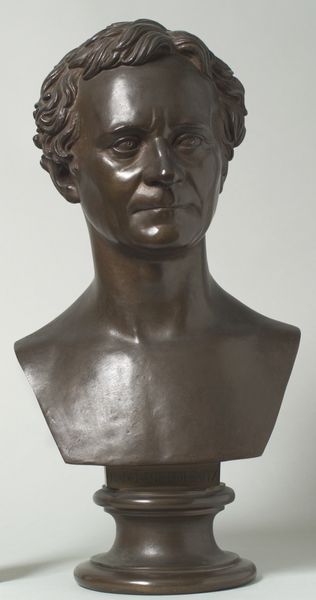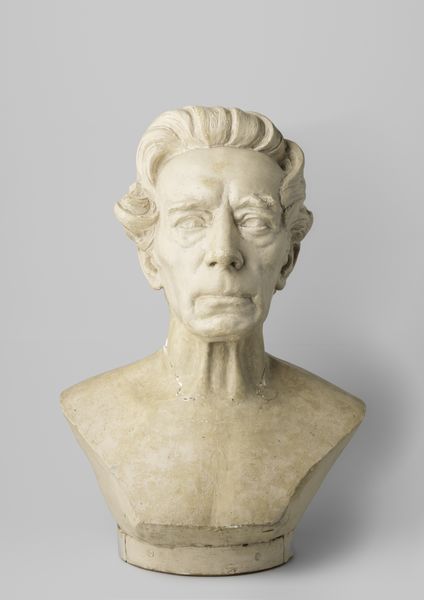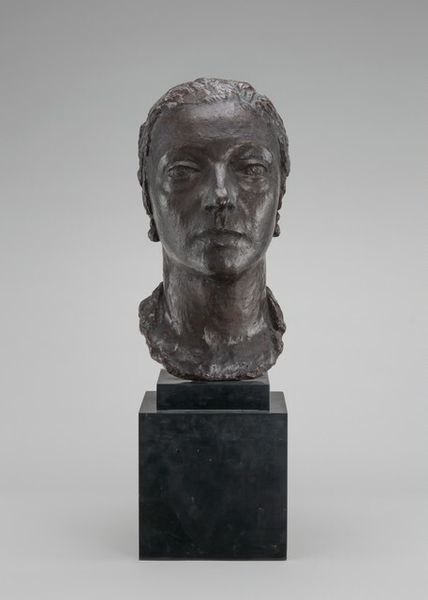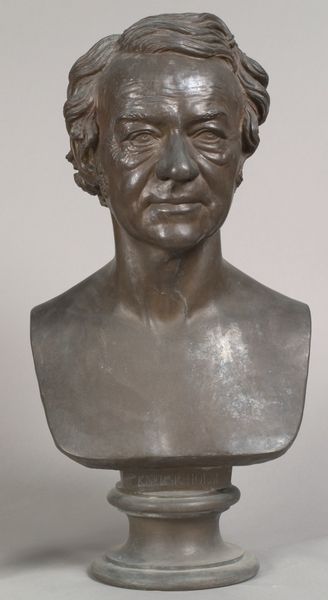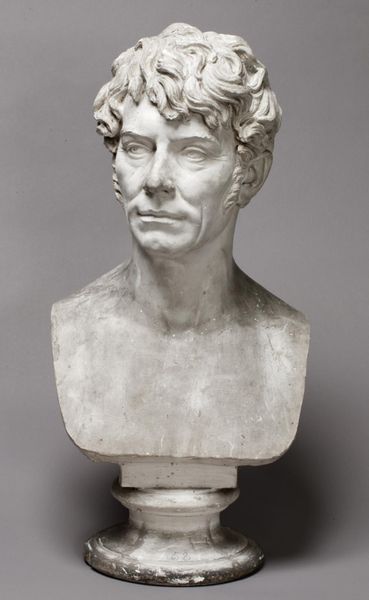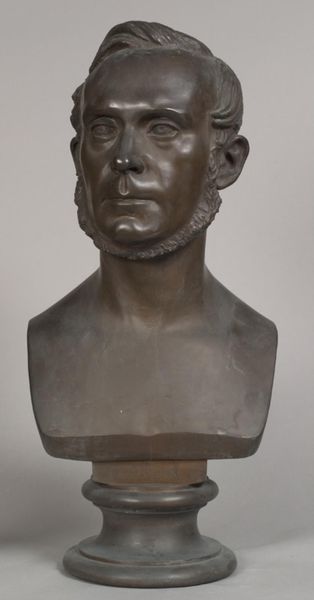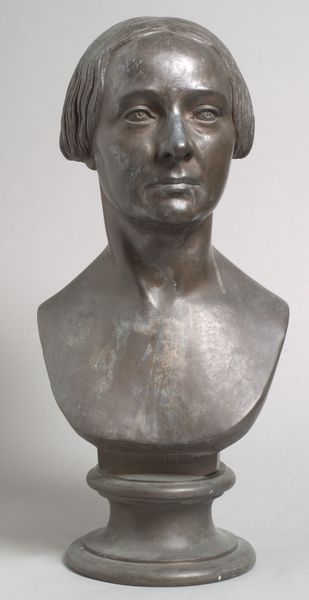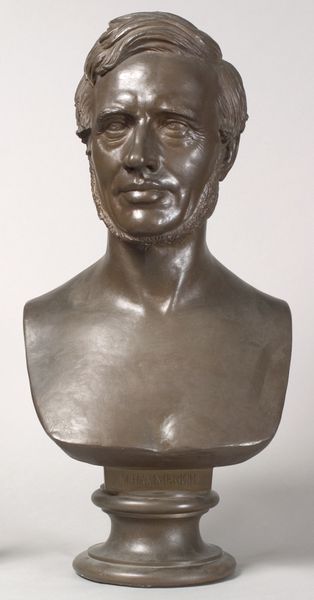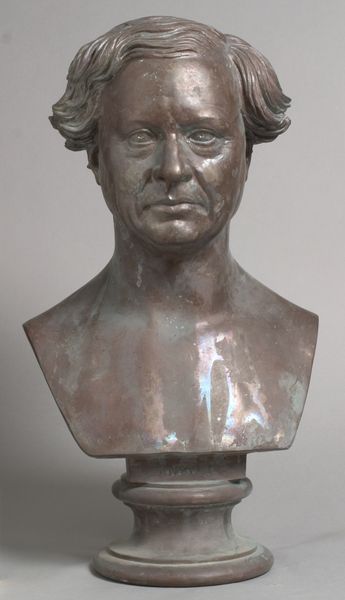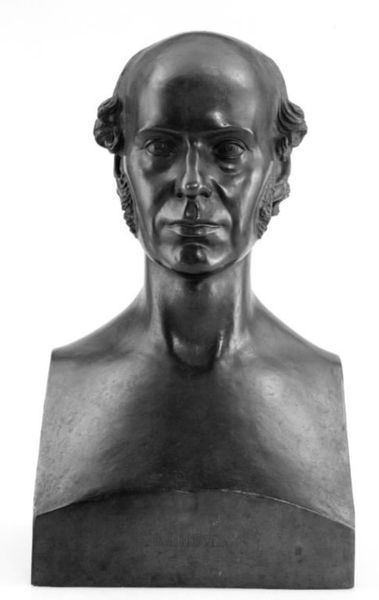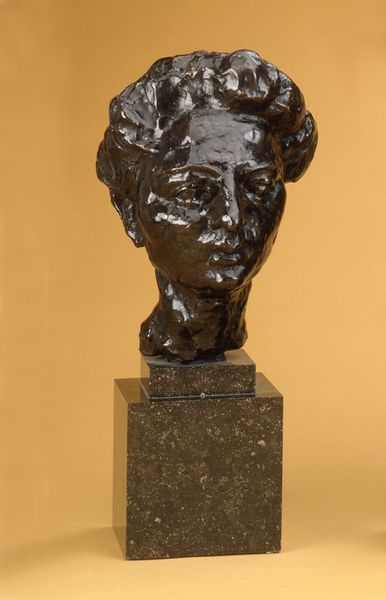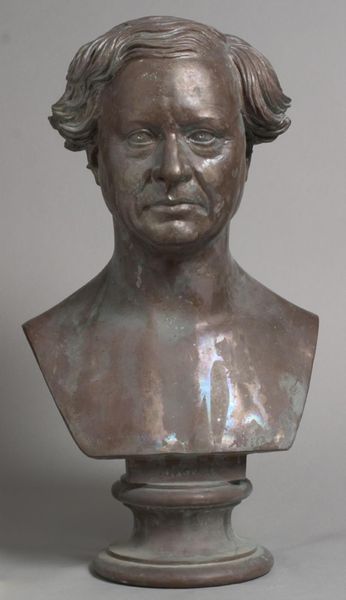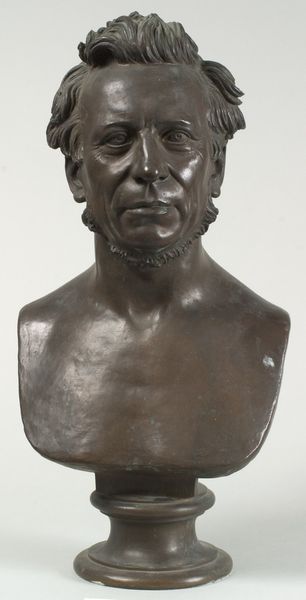
sculpture, marble
#
portrait
#
neoclacissism
#
sculpture
#
sculpture
#
marble
Dimensions: 62.5 cm (height) (Netto)
Curator: It’s easy to find a stoic intensity in this marble bust of Hans Christian Ørsted by H.W. Bissen, completed in 1850. He’s portrayed with such gravitas, as a visionary in the burgeoning age of scientific discovery. Editor: What strikes me immediately is the texture of the marble itself. You can see the tool marks, the evidence of labor—it's not as smoothed and idealized as you often see in neoclassical works. Curator: It does possess a realism that’s striking, a commitment to capturing Ørsted's likeness. Notice the lines etched into his face—each one seems to carry a trace of his intellectual pursuits and his personal experience. There’s a sense of almost burdened wisdom in his eyes, perhaps hinting at the weight of knowledge and responsibility. Editor: The way the material captures light and shadow is fantastic too. But I wonder, what was it like to actually quarry the marble, to transport it, to then shape it? It connects this brilliant mind to the physicality of creation. How the raw material and skilled hands combine to solidify a legacy. Curator: Exactly. And I think marble was carefully chosen to convey a timeless sense of permanence, especially fitting for a man who advanced scientific understanding and changed our understanding of electricity and electromagnetism. The cold, hard stone reflects his objective view. Editor: True. And look at how the sculptor dealt with representing his clothing. There is detail, but only in terms of function; nothing is emphasized or gilded. The lack of ornamentation focuses our attention solely on the individual, and even reflects an image of scientific, stark efficiency. Curator: It's interesting how a seemingly static object can hold so much narrative weight. Every ridge and hollow etched in marble speaks of societal values placed on scientific advancement and individual brilliance during the era. This portrait stands as more than a likeness, acting as a marker of intellectual pursuit. Editor: Definitely. Reflecting on Bissen’s work I find myself appreciating it beyond an idealized form. It serves as a powerful physical representation of intellect made accessible, while simultaneously showing respect for process and production of artistic form itself.
Comments
No comments
Be the first to comment and join the conversation on the ultimate creative platform.
